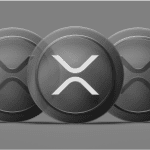Crypto Wallet Intuitiveness: 9% Returns Could Shift the Game
Only 13 percent of people now find Web3 wallets intuitive, and that alone explains why crypto hasn’t yet gone mainstream. When most of us take up a mobile banking app, it just works. We tap, swipe, send money, check our balance, and move on. But thanks to Web3 wallets, the experience is also bursting with ideas like seed phrases, private keys, gas fees and chains, and can come off as more like learning a new language than managing money.
The recent study of these numbers raises a huge issue: People want to use digital finance tools, but they don’t want to feel confused, overwhelmed, or afraid of losing their money. And for now, Web3 wallets still carry that intimidating quality. Seventy-five percent of people find traditional digital wallets intuitive, while only thirteen percent view Web3 as being such.
That’s a huge gap, and it has nothing to do with the potential of crypto and everything to do with how people experience it. Few people have even been able to see someone actually use a Web3 wallet in real life. Only sixteen percent had ever seen a Web3 transaction, meaning there is very little social proof. If you see friends tapping to pay with Apple Pay, you feel quite comfortable trying it as well. But when no one else in your life is using Web3 wallets, the technology feels more foreign. There’s another big problem: People don’t perceive crypto wallets as natural tools to manage money on a daily basis. Just 12 percent of respondents said a Web3 wallet seamlessly integrates with their conventional approach to money spending. And it’s reasonable: The act of sending crypto can include network choices, confirming gas fees, double-checking addresses and chain knowledge.
There’s an added layer of friction that people cannot possibly expect from a digital wallet — particularly when they’re accustomed to sleek interfaces that mask complexity, not celebrate it. But there’s a compelling twist: monetary incentives could begin to alter this behaviour. Companies such as Aave are shipping products that take customers up to nine percent on held crypto, and they price this product in interfaces that resemble, in appearance and feel, much more like the interfaces of traditional savings apps. Mastercard is also adding alias-based systems to make it easier for users to send money without long cryptic wallet addresses. Moves like this demonstrate that the industry recognizes the problem: People aren’t going to use new financial tools if they’re not easy and intuitive. And if people can reap meaningful returns using a wallet that even seems easy, adoption might quicken. Sure, a nine percent return isn’t a magic button. People fear losing access to funds, managing seed phrases, or sending assets to the wrong chain.
These fears won’t wash away overnight, even with high returns. The ultimate answer is to combine monetary incentives with an enriching user experience. That means streamlining onboarding, concealing useless complexity, providing recovery options that don’t scare beginners and explaining risk in terms common people can understand. When a Web3 wallet is as comfortable (for the user) as a bank app, the adoption curve will likely tilt to the right. For that reason, think of this stage in crypto as being the beginning of email. In those days you had to set up servers, ports and protocols just to send the message. Today companies know how to hide the hard parts; and so email is nowadays automatic. Even so, Web3 wallets were still stuck in that early, clunky age, and until we experience a “Gmail moment,” most people won’t give them a try. It was the same for cars, phones, and computers, once they became easier, the masses did. Web3 is in some way heading in that direction, but I am not sure it’s fully there yet.
If financial apps like Aave’s new savings wallet and Mastercard’s alias system really begin to catch on, we may end up seeing a lot more people getting to experiment in a way that has no walls about it. As more brands appear in the space, the technology can begin to feel less like a secret club for crypto-natives and more like something your neighbour or coworker could use. This social normalisation is as important as the returns. The bigger question is whether a blend of simpler interfaces and high-yield incentives will lift intuition numbers from a meager thirteen percent to something more meaningful. And honestly, it probably can. Consumer behaviour changes rapidly when a new wallet comes up that seems easy and benefits are real. People aren’t out to get on the new technology; they’re opposed to feeling lost.
Ultimately Web3 wallets won’t make it into the “mainstream” because they’re revolutionary, but will become “the mainstream” because it doesn’t feel bewildering anymore. A nine percent return may be a good carrot, but the ultimate winner may lie when people can open a Web3 wallet and immediately know what to do without feeling the need for a crypto translator. If that industry continues to nudge its industry in the direction of clarity, simplicity, and value for everyday spending, the movement from 13 percent to mass adoption becomes not only possible but also guaranteed.




















